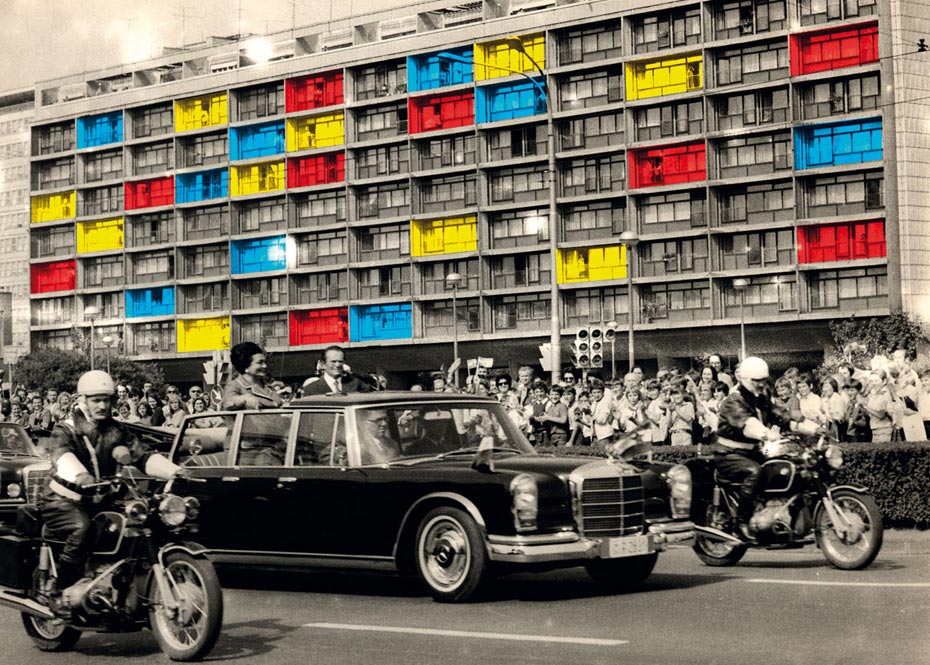Is art with a social purpose any less “art” than a giant sculpture of a balloon dog? That’s what the Croatian artist is asking

I suppose I’m of the mind that it’s not a problem for art if it’s useless; in fact, that’s kind of what make it art. But is art with a social purpose any less “art” than a giant sculpture of a balloon dog? These are the kinds of questions the work of Sanja Ivekovic forces you to ask yourself. Ivekovic is having a very large coming out party in London with shows running at Calvert 22 in Shoreditch and the South London Gallery near Peckham; they are her first solo shows in London after a career of almost forty years. If memory serves there’s also a work by her in the Tate’s disappointing attempted blockbuster A Bigger Splash. I remember wanting to see more of Ivekovic’s work after A Bigger Splash, and I guess I got my wish.They say you should be careful what you wish for, but having seen the Calvert 22 show, I’m thinking I might start wishing more often. For those that don’t know the name, Ivekovic is Croatian and works across media, video, performance, photo montage and beyond. The show at the South London Gallery centres on her earlier work and the Calvert show offers more recent pieces. Growing up in communist-era Yugoslavia might not seem the most fertile of atmospheres for a budding artist determined to examine sex discrimination and modalities of transgression, but as with her one-time compatriot, Marina Abramovic, the culture of official weirdness seems to have been more conceptual feast than famine.
“Growing up in communist-era Yugoslavia might not seem the most fertile
of atmospheres for a budding artist determined to examine sex discrimination and modalities of transgression…”
Representations of femininity, both general and specific, abound in Unknown Heroine. Ivekovic considers fashion models, female partisans, emancipated workers in the country’s early-post-war period, as well as Ivekovic’s recurring muse, Marilyn Monroe. Marilyn is the subject of Tragedy of a a Venus which juxtaposes tabloid images of Marilyn with images of Ivekovic in similar poses. The distance between the hyper-stylised Marilyns and the workaday shots of Ivekovic is all the more visible when one considers how the pose itself becomes fetishised. Women are not only existing to be seen, but to be seen doing certain things which accrue an oddly gendered significance along the chain of expectation.
The Calvert show also has two powerful films, one which explores the story of Ivekovic’s mother’s resistance to the Nazi occupation of Yugoslavia, an occupation with which many Croats were more than happy to collaborate, not least the fanatic mass murderer Ante Pavelic who led the wartime Croat militia the Ustasche, a man whose reputation is periodically dusted off by nationalist Croatian leaders with far more selective historical memory than Ivekovic. Another film, Pines and Fir Trees is the work that prompted the useful/useless musing that open this review. The work is an hour-long exploration of the role of Croatian women at the dawn of the socialist age. In a a sense, it’s more documentary than artwork. One could, true to ahem-type fetishise the low-fi subtitling and camera tricks, but that hardly seems the point, the story is a fascinating one. The film is produced by Electra, a centre for female artists Ivekovic initiated and so the work is also a kind of documentation of a social endeavour. Informative and socially redeeming, that sounds awfully useful; but is it art? In this case the answer is yes.
Sanja Ivekovic: Unknown Heroine runs until 24 February at Calvert 22, 22 Calvert Avenue London E2 7JP and the South London Gallery, 65-67 Peckham Road, SE5 8 UH




